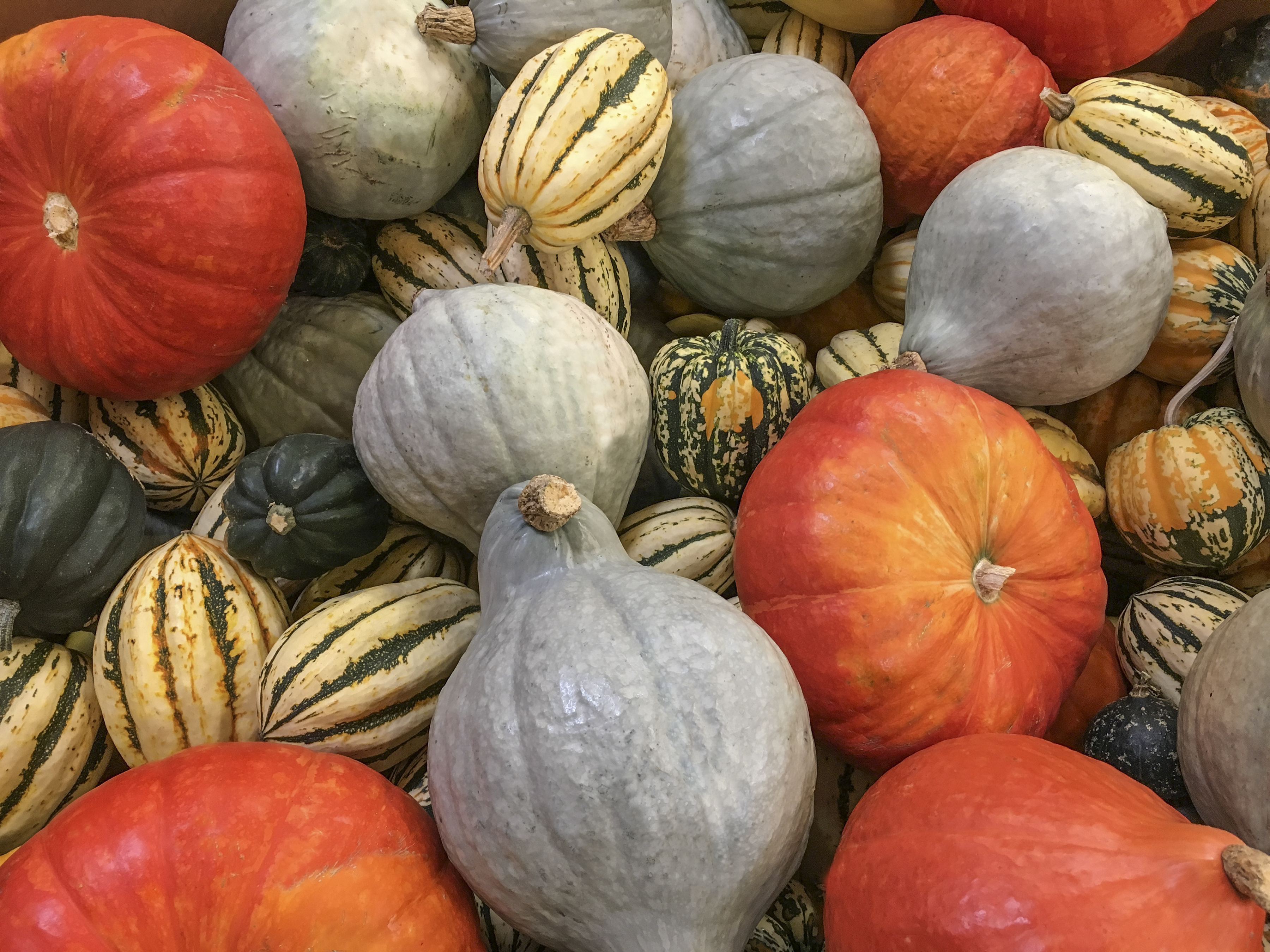
Produce 101: Winter Squash
Produce 101: Winter Squash– The Difference Between Summer Squash and Winter Squash
You may wonder what a winter squash is versus a summer squash…well, the short answer is it’s a squash that’s allowed to fully mature. The seeds fully mature and become hard, the skin becomes a lot thicker, and the flesh is really dense–and these squashes typically (but not always) need to be cooked before you eat them.
Summer squash are a little different. The seeds and skin are soft and fully edible. They are sometimes referred to as “soft shell squash” and as such, can be cooked or eaten raw. The entire squash is edible, versus the winter squash’s seed cavity that needs to be cleaned out.
Produce 101: Winter Squash — Grades and Storage
The USDA has two grades for hard or winter squashes: US #1 or US #2. Both are based mainly on external factors including blemishes, scarring, uniformity of size and shape, and color for the variety… as well as some other internal factors…but really, it’s about the external appearance.
How to Know When a Winter Squash is Ready to Use
How do you know if your squash is ready to use? Well, the stem tells you all you need to know. When hard squashes are picked, they’re really not ready to use. The farmers cure them—which just basically means they’re drying out the flesh, toughening the skin, and that’s where the stem comes in.
You want your stem of the squash to be a little hard and woody, we call it “corked.”
This will tell you everything you need to know. You want the squash to feel heavy for its size–you don’t want it to be soft, you want it to be hard not soft. You also want to look for a deeply colored shell color for the variety.
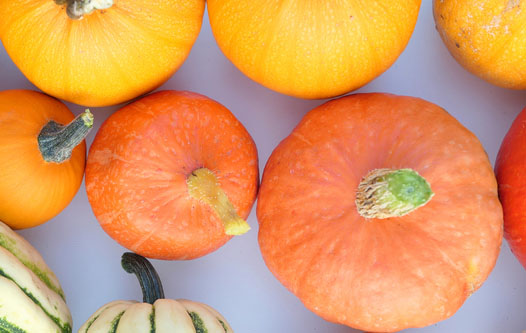
How to Store Winter Squash
They don’t like the cold, keep them in the warmer part of your walk-in. Usually the warmest part of your cooler in by the door. Excessive cold will cause the surface to pit and exacerbate any decay. Squash are hardy, if you have limited cooler space, you can stack the cases. They will last a while in your cooler if stored properly.
Winter Squash Cleaning Tip:
A great tool for cleaning out the seed cavity is an ice cream scoop with a release-lever. The ice cream scoop has a thin sharp edge–perfect for scooping–whether it is rock hard frozen ice cream or the dense flesh of a winter squash. The lever also makes quick work of releasing stringy squash pulp.
Produce 101: Winter Squash — Common Types of Squash
So, you see all the varieties, and you may wonder what do I do with them? Let’s go over a few of the more common ones you see.
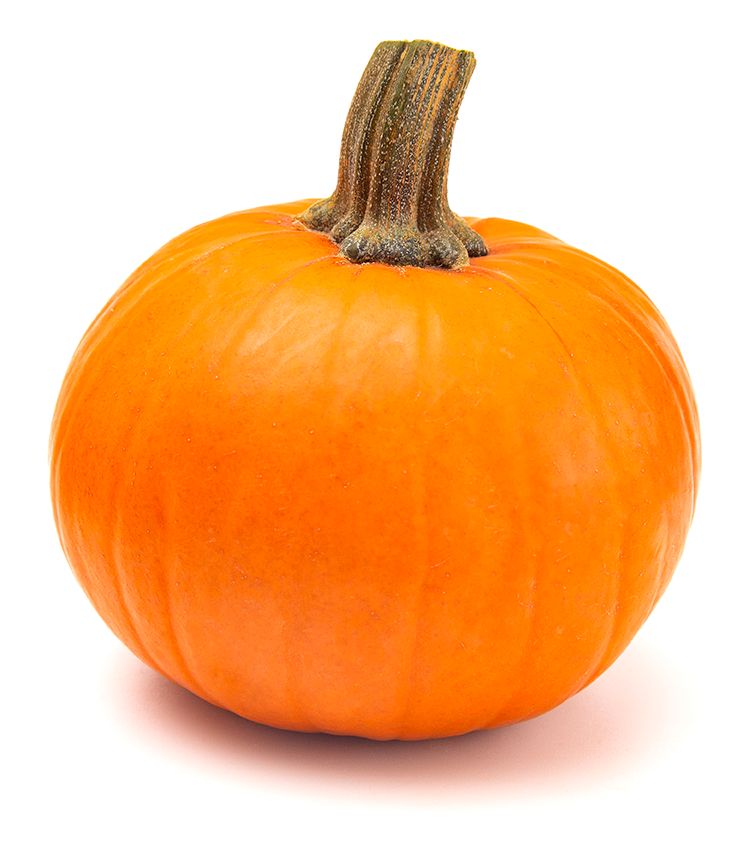
Sugar Pie Pumpkin
Some people call it just a pumpkin, but it’s really a squash. This is the Sugar Pie or Pie pumpkin variety. It’s great for cooking, the skin is a little too thick for eating and needs to be peeled…but save those seeds. In fact, save all the winter squash seeds you can. Roast them and make a wonderful, healthy snack. The flesh of the Pie pumpkin is creamy, not stringy, which is wonderful for soups, obviously pies, and even in a custard. It’s called pie pumpkin for a reason.
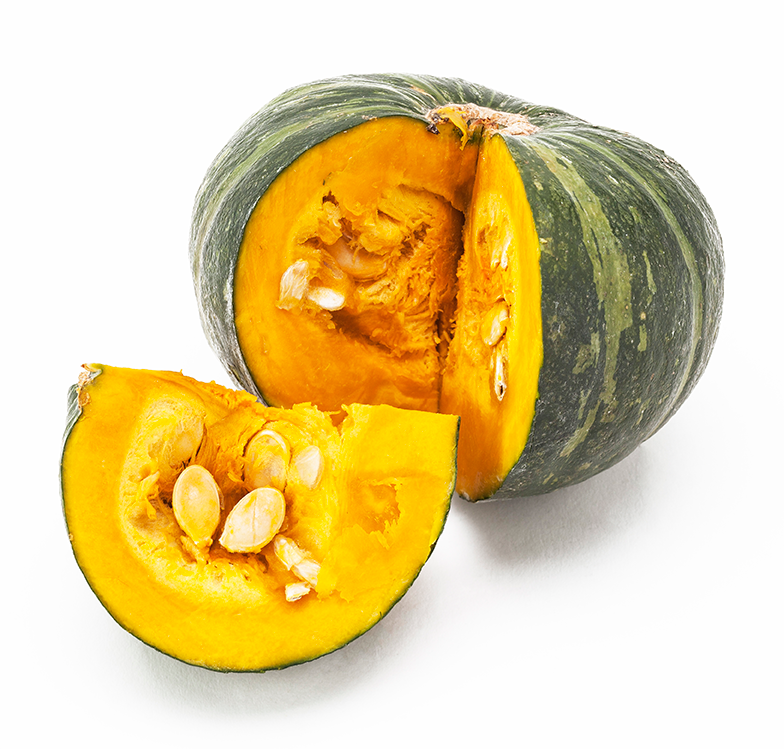
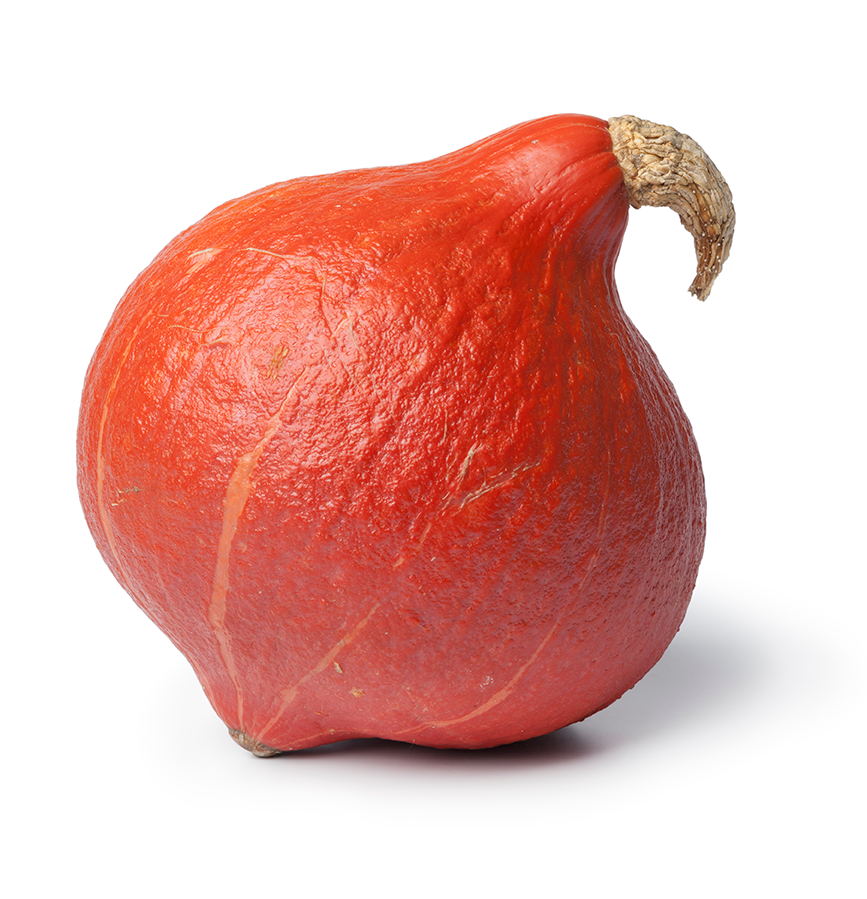
Japanese Pumpkins
Here we have two Japanese pumpkins pictured above. The green one pictured in the foreground is the Kabocha squash, which is available year-round.
The red/orange one is the more seasonal Red Kuri squash. I think the flavor is better on the Red Kuri. It’s got some mild notes of cinnamon and nutmeg…and the flavor is impeccable. It is a deeper colored, and flavored, squash. The flesh is smooth, not as smooth as the Pie pumpkin, but it is not a fibrous as other winter squash can be.
The skin on both squashes are thin enough to be edible, which is not always the case with winter squash. You may want to consider using the Kabocha in a tempura application for something unique.
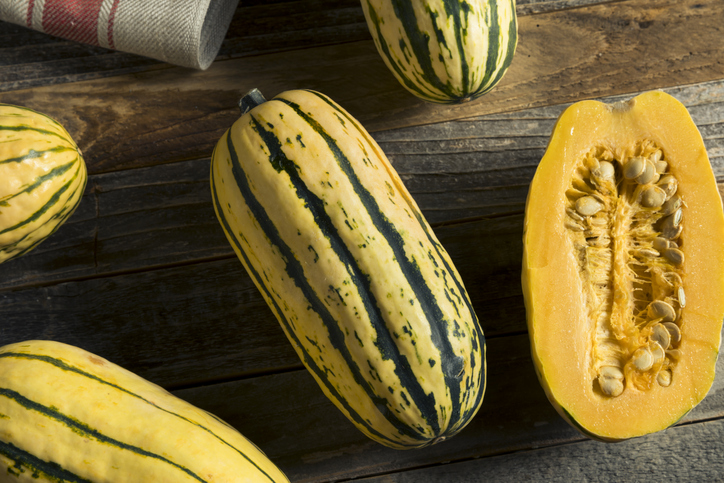
Delicata Squash
Pictured here is one of the autumnal favorites for eating and also for décor. This is the Delicata squash, it is a smaller squash and is one of the more delicate of the hard squashes. This one’s unique in that the skin is very thin and not worth the effort to peel. You can slice these in half-inch rings and take the seeds out, brush them with a little olive oil, and grill. The skin will crisp up and they cook quick. You can also take them, split them in half, roast them flesh side down, and then stuff them with your favorite protein- or grain-based option as a center of the plate entrée.
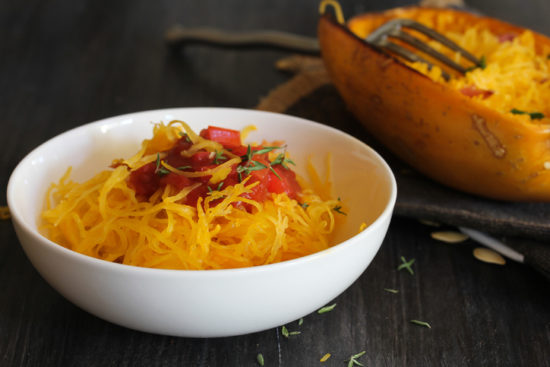
Spaghetti Squash
The Spaghetti squash ranges is color from pale to deep yellow, and it may or may not have some skin blemishes. Since the skin is way too thick to eat, any blemishes won’t matter in the end. It is usually prepared by cutting in half longways and removing the seeds, and then slowly roasting cut side down. Let it cool a little bit and then take a fork and the flesh will easily shred–it’ll come off in long strands that resemble spaghetti.
Toss it with a little pesto or a little homemade marinara and have a great gluten-free pasta alternative. Unlike other winter squash that have a somewhat dry flesh, this is a high-moisture squash. It may weep moisture during plate-up, so be wary of that.

Butternut Squash
The Butternut squash is probably one of the easiest to use because the seed cavity is so small and it’s all flesh up in the neck area. Because of it, this squash is the most versatile. It has a smooth, rich flesh. The skin can be a little too thick to be palatable, so this one you need to peel.
You could shred it finely and add it raw to your salads, or you could shred it a little thicker and make another pasta alternative. It’s also great roasted and cubed for a great mashed potato alternative. Since it mashes well, this squash is commonly used as a stuffing for dumplings, ravioli, or made into gnocchi. Because the flesh is so smooth and the flavor is mild, this is a great soup squash and purees extremely well and teams up with hearty, autumn herbs, like sage.
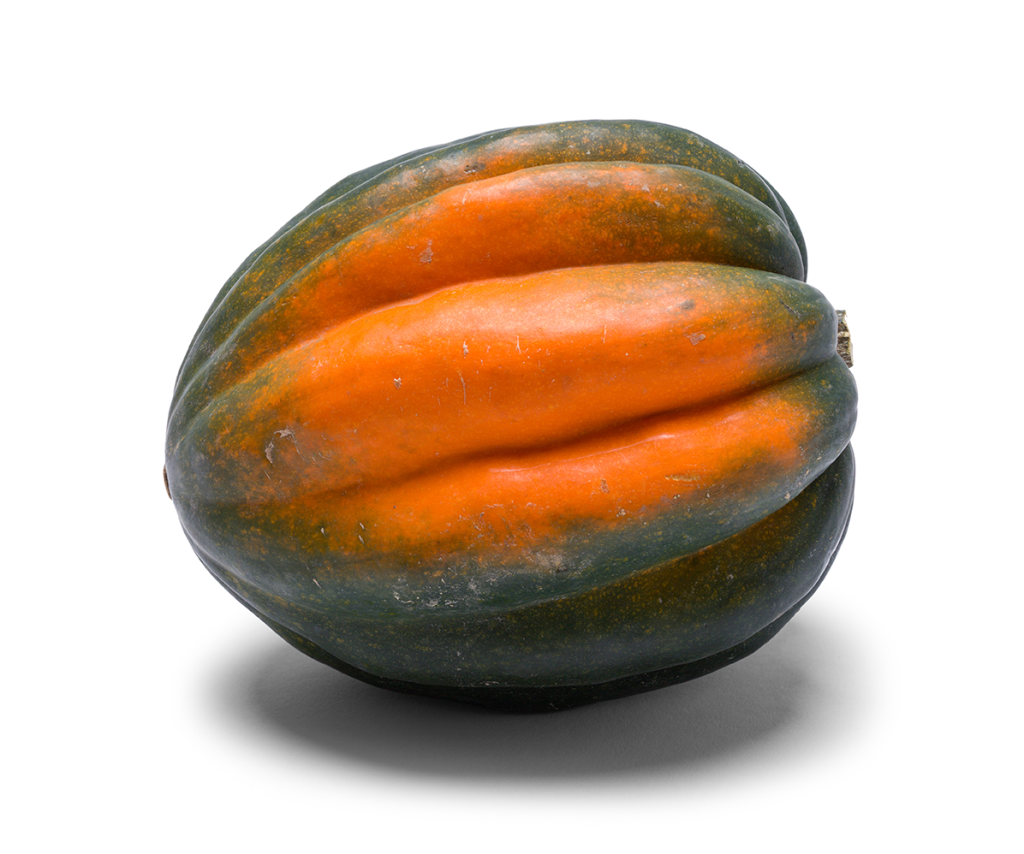
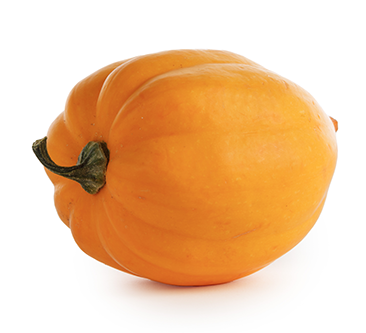
Acorn Squash
This green one is one of the most recognizable ones…it’s the Acorn squash, and it gets its name from its shape–it looks a little bit like an acorn. The flavor isn’t as deep as the others, but it is easier to work with. The seed cavity is not as big, and you can also eat the skin on this if you slice it thin enough.
Consider cutting it in wedges and brush with a little olive oil, rosemary, thyme, salt, and pepper, and you’ve got a great Italian-inspired side dish. One of the common uses for this squash is as an individual vessel for stuffing. When cooked and hollowed-out a little further, it also makes a great Thanksgiving soup tureen.
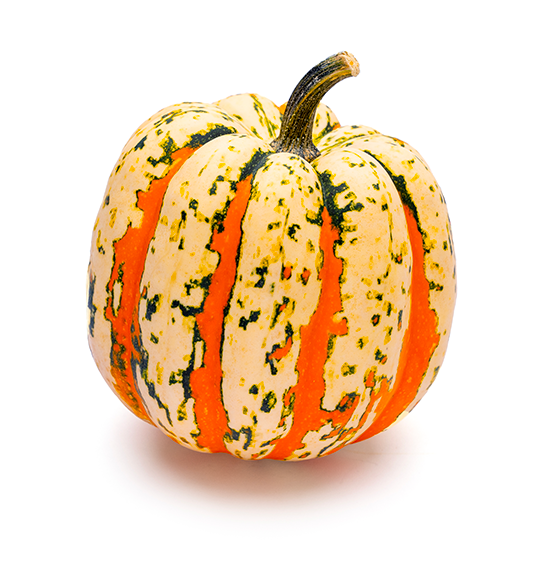
Calabaza Squash
This dull orange-green squash is Calabaza or Caribbean Pumpkin. This one’s unique that its flesh really absorbs flavors, so consider using this in a stew such as Sancocho. It’ll take up all that wonderful flavor but still maintain the texture of the squash. This one is typically sold in in large pieces in a retail setting, rather than the whole squash.
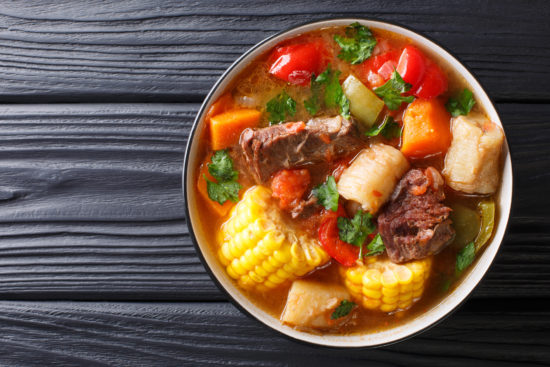
Other Hard Winter Squash You Find During the Season
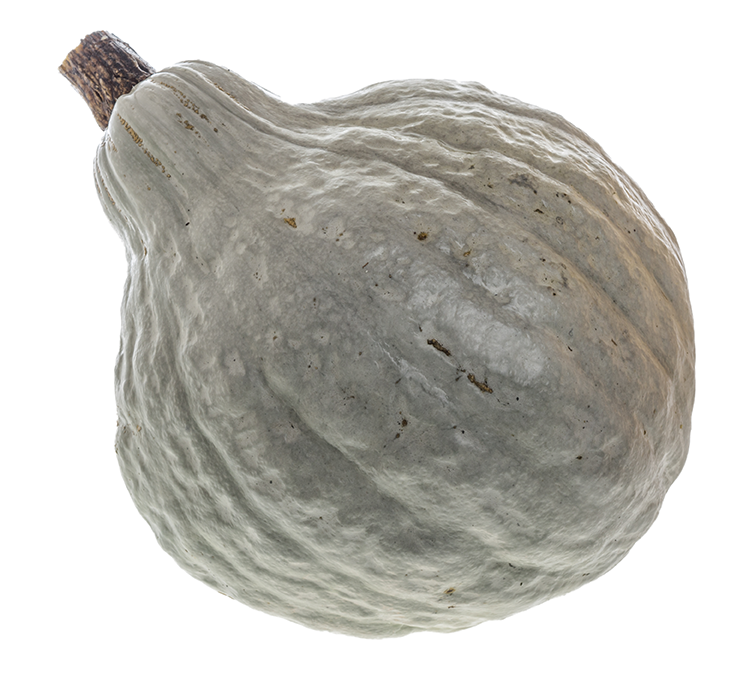
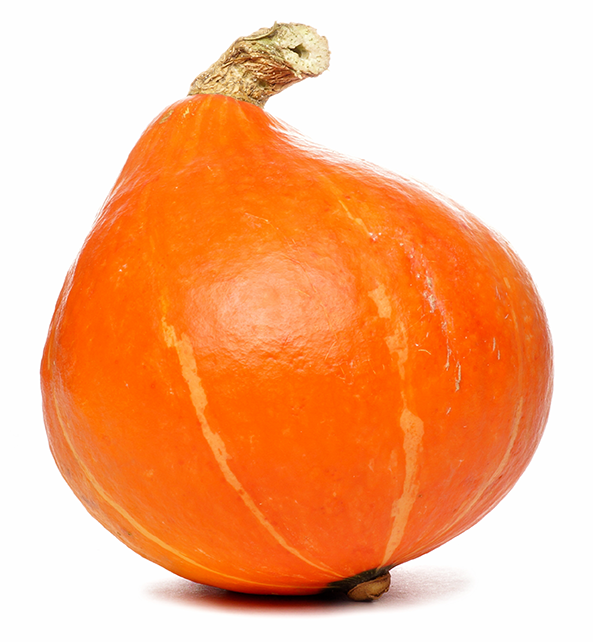
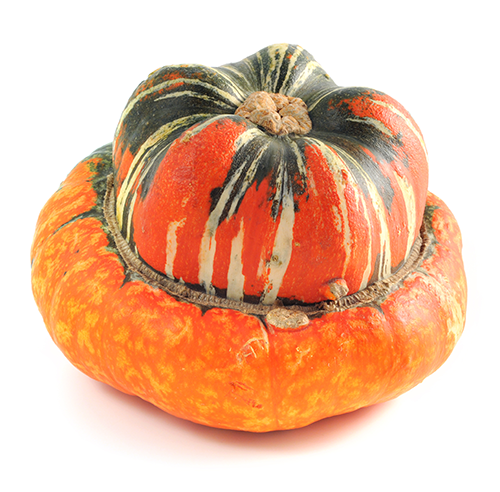
Decorative Hard Winter Squash
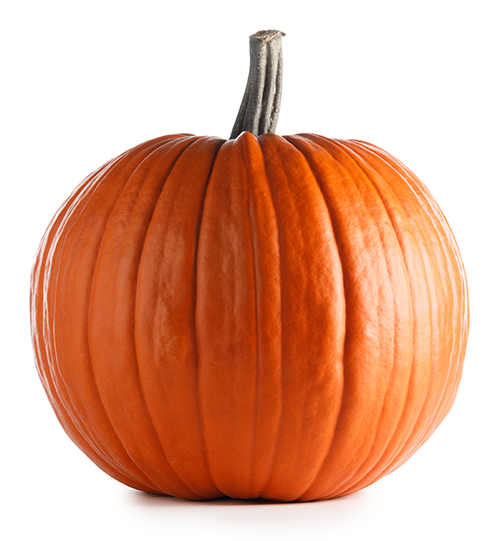
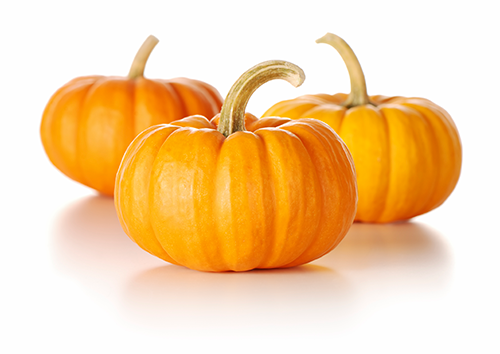
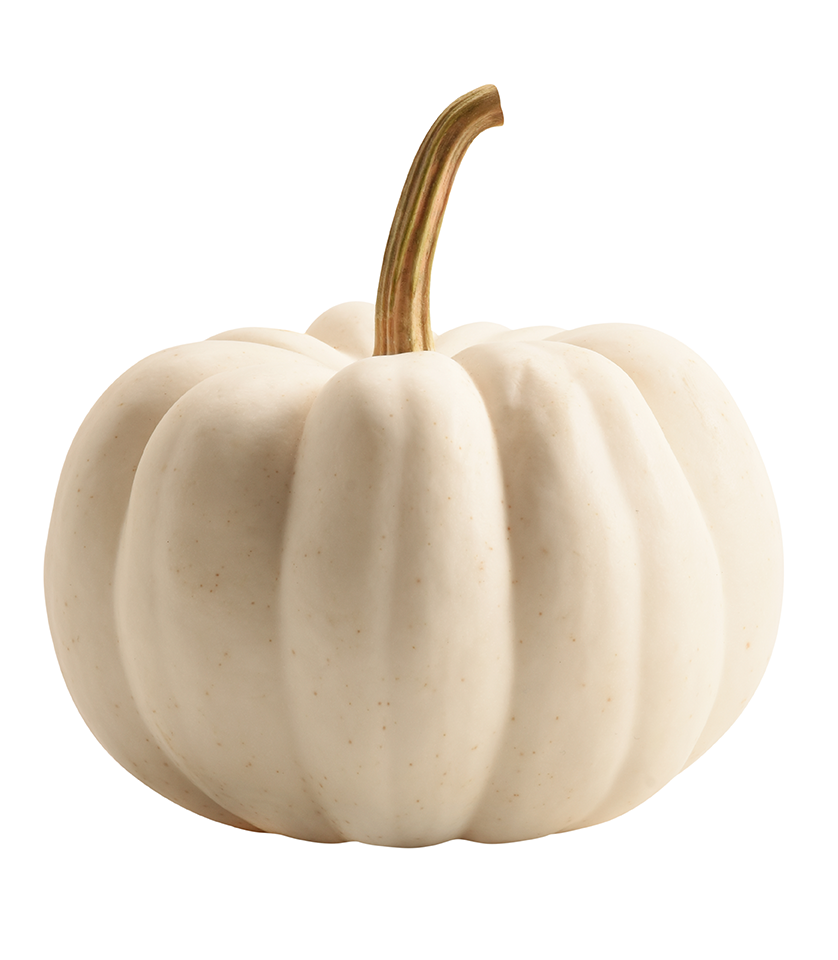
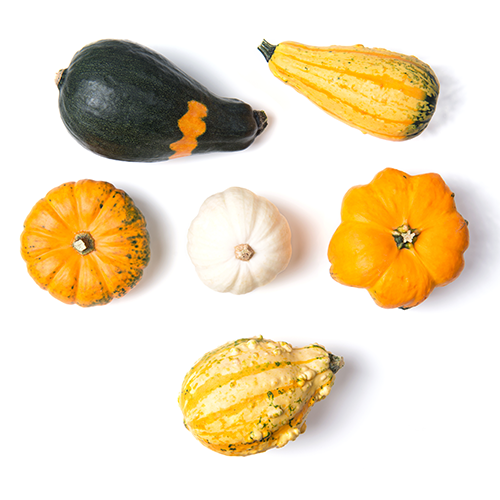
We’ve really just scratched the surface when it comes to varieties in Produce 101: Winter Squash. All of them are great and can be used in a myriad of fashions, even if just to decorate your table centerpiece!
Watch Dan go over the basics in Produce 101: Winter Squash
Contact your Marketing Associate about adding winter squash to your next order. If you are not a customer, find out how to become one today! Some varieties are available year round, and some are only available in the autumn season.
Content provided by Chef Daniel Snowden, the Director of Culinary Development for FreshPoint Central Florida. He has been in the produce industry almost 20 years and loves getting geeky about food. Additional contributions by Lisa Brizard.
Some tools you can use:
Visit freshpoint.com for our seasonal availability guides—and while you are there, check out the FreshPress, our latest market report. Place your orders online with ease at myfreshpoint.com. Did you know you can receive real-time reliable delivery alerts on the day of your delivery? Activate and subscribe at FreshPoint.com/mydelivery
Download our app and take your produce management on the go. Place orders, review flyers, watch videos…all in one spot!
Find out more details about our UBU program, and how we are shining a spotlight on food waste while making value and food safety a priority.
We buy local to strengthen regional economies, support family farms, preserve the local landscape, and to provide fresh-from-the-farm food to our customers. Local.freshpoint.com connects you to your local farmers like never before! Customize your search by zip, city, state, radius…even by crops and growing methods. Pop in your zip code and learn about our local farmers.
Socialize with us!
Did you know we are on YouTube? Head over to our page and check out our 75+ videos. Don’t forget to subscribe, and also be a part of our Bell Team—hit the little bell icon to get notifications when we upload new videos.
Follow FreshPoint, Inc. on Facebook, Twitter, Instagram, and LinkedIn…and follow The Produce Hunter on Instagram as she finds the best specialty produce at the Santa Monica Farmers Market.

